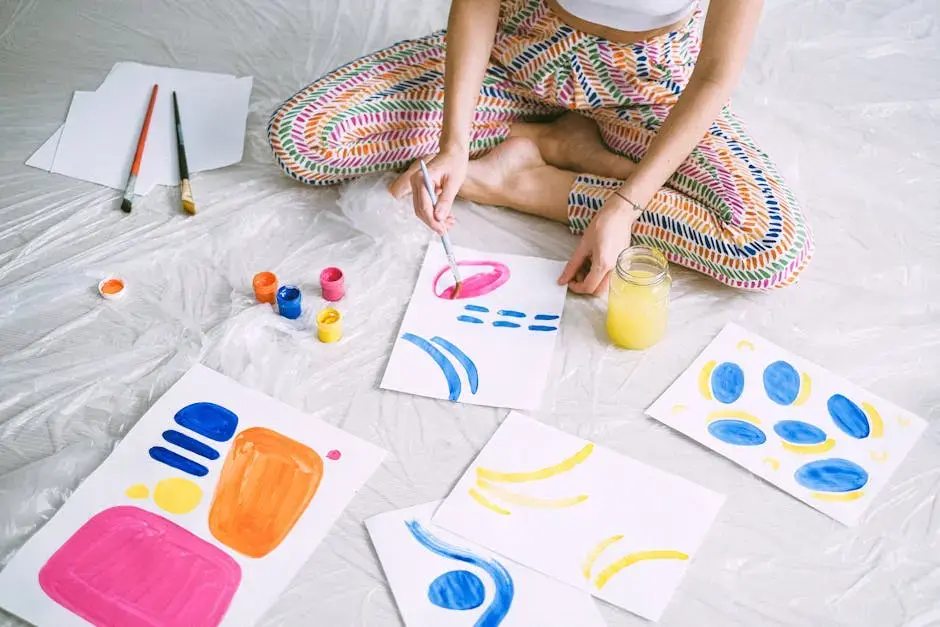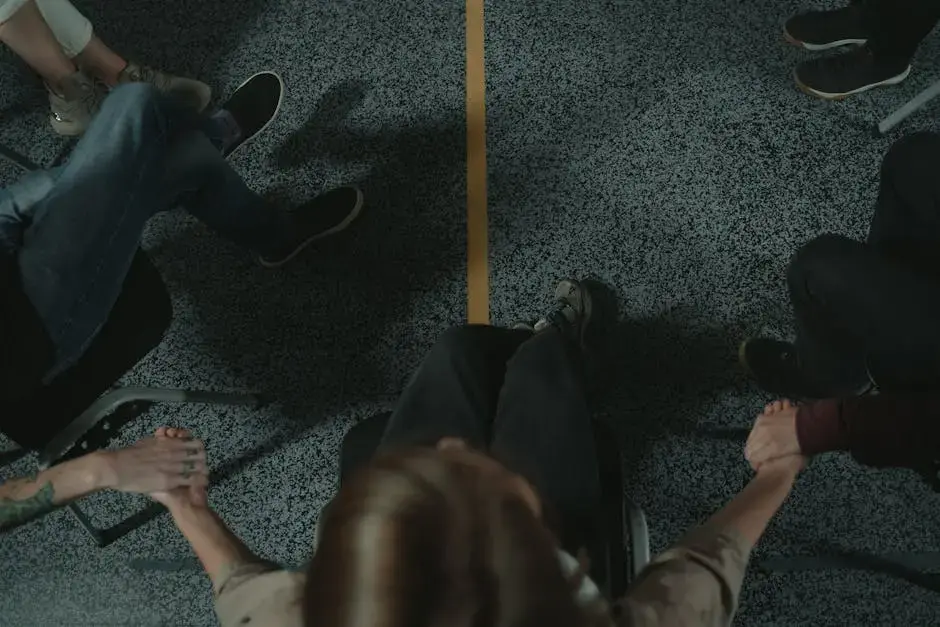15 Ways Virtual Art Therapy Can Support Your Mental Health
- Karrie Stafford

- Nov 22, 2024
- 8 min read
In today's fast-paced world, mental health is more important than ever. Virtual art therapy offers a unique way to explore one's emotions and express creativity from the comfort of your home. This blog will delve into the various ways that virtual art therapy can profoundly support your mental health journey, illustrating its benefits and accessibility. Let's explore how engaging with art can foster wellness and resilience.

1. Expanding Accessibility to Mental Health Resources
One of the most significant advantages of virtual art therapy is its accessibility. Individuals often face barriers, such as physical distance from mental health services or existing budget constraints. With virtual art therapy, these barriers are significantly reduced. No longer must you travel long distances to seek support; a virtual session can occur in the comfort of your own home. This opens the door for people from remote areas or those with mobility issues, allowing them to engage in therapeutic art practices without added stress.
Moreover, virtual platforms often enable flexibility in scheduling. Traditional therapy sessions may not always align with hectic, modern schedules. However, virtual art therapy offers varying time slots, empowering individuals to choose what best fits their routine. This adaptability not only reduces anxiety associated with fitting therapy into a busy life but also encourages more people to seek help, knowing that they can tailor their wellness journey to their needs.
2. Fostering Creative Expression in a Safe Space
The beauty of virtual art therapy lies in its ability to create a safe and inviting space for self-expression. In a typical virtual session, clients can explore various artistic mediums, from painting to digital art, all within the comfort of their own surroundings. This familiarity often helps people feel more at ease, allowing them to dig deeper into their emotions. When individuals feel safe and comfortable, they often experience breakthroughs they never thought possible.
Furthermore, without the pressure of conventional environments, creativity can flow more freely. The therapeutic process becomes more about exploration rather than perfection. Participants learn that it’s okay to make mistakes with their art, which can directly reflect on their life attitudes. This gentle encouragement fosters a nurturing relationship with one’s self, nurturing the understanding that art is not just about the final product but also about the journey of expressing one's innermost feelings.
3. Building Community Through Online Art Sessions
Virtual art therapy not only focuses on individual healing but also emphasizes community building. Online groups can facilitate connections among participants who may have similar struggles. Sharing experiences while creating art can be a unifying activity, promoting feelings of belonging and understanding. As group members express themselves, they often find common ground, which can contribute significantly to their healing journey.
In these sessions, people may share their artwork and discuss the emotions behind their creative process. This exchange can foster empathy and compassion, not just towards others but also towards oneself. Feeling heard and validated by peers can enhance the therapeutic experience, creating a support network that continues beyond the virtual platform. This sense of community can be critical in combating isolation, especially for those dealing with mental health challenges.
4. Enhancing Emotional Awareness and Regulation
Virtual art therapy can greatly enhance emotional awareness, allowing individuals to recognize and articulate their feelings. The act of creating art encourages reflection, enabling people to visualize their emotions more clearly. For example, using colors to represent feelings can provide insight into complex emotions that may be difficult to express in words.
Moreover, this heightened awareness helps individuals regulate their emotions better. By recognizing feelings as they arise, they can develop healthier coping mechanisms instead of resorting to negative behaviors. This process not only aids in immediate emotional responses but can also instill long-term emotional intelligence, which is an essential skill for navigating life’s ups and downs.
5. Discovering New Coping Strategies
Art therapy introduces a variety of coping strategies that many may not have considered. Individuals often explore techniques such as mandala drawing, collage making, or even simple doodling as outlets for their emotions. Each medium offers unique ways to engage with feelings that may be overwhelming or difficult to handle.
By experimenting with different artistic processes, participants can discover what resonates most with them, equipping them with tools for distress tolerance in real-life situations. This exploration encourages individuals to think creatively when faced with challenges. Instead of feeling paralyzed by stress or anxiety, they may start to see art as a valuable outlet—one that provides comfort and clarity even during turbulent times.
6. Developing Mindfulness Through Art Activities
Mindfulness is an essential component of mental well-being, and virtual art therapy can foster this skill effectively. Engaging in art-making demands focus, drawing individuals’ attention to the present moment. As they immerse themselves in the creative process, they often find themselves less preoccupied with worries about the past or future, creating a meditative state.
Practices such as mindful coloring or guided imagery while creating art can deepen this experience. These activities encourage individuals to experience their senses—smelling paints, feeling textures, or observing colors—which enhances their engagement and promotes a robust sense of presence. By cultivating mindfulness through art, participants may notice improvement not only in their mental health but also in their overall quality of life, as they become more attuned to their surroundings and internal states.
7. Promoting Personal Growth and Self-Exploration
Virtual art therapy serves as an avenue for personal growth and self-exploration. As individuals create art, they often unearth hidden parts of themselves, leading to profound realizations. The therapeutic environment encourages curiosity and exploration, allowing clients to delve into topics they might ordinarily shy away from.
This exploration can manifest in various forms—from creating a piece that represents a significant life event to expressing hopes and dreams through visual storytelling. Each piece of art becomes a stepping stone in understanding oneself on a deeper level. This newfound awareness can foster resilience and confidence, empowering individuals to navigate life's challenges with greater insight and strength.
8. Improving Self-Esteem and Confidence
Participating in virtual art therapy can lead to increased self-esteem and confidence. When individuals see their progress and artistic creations, it cultivates a sense of achievement that can be incredibly empowering. Many people are surprised by their capabilities, sparking a positive feedback loop in self-belief.
The supportive atmosphere of art sessions encourages individuals to share their creations without fear of judgment, which further bolsters their self-worth. As individuals express themselves freely, they begin to appreciate their unique perspectives and talents, gradually building a stronger sense of identity. In this nurturing environment, creativity becomes a means for validation, helping them recognize and celebrate their individuality.
9. Facilitating Non-Verbal Communication
Art is a universal language, making virtual art therapy an effective means of facilitating non-verbal communication. For many individuals, particularly those struggling with trauma or anxiety, articulating feelings through words can be challenging. Art provides an alternative form of expression that can convey emotions that are often difficult to verbalize.
Through the use of colors, shapes, and techniques, individuals can depict experiences and feelings that might otherwise remain locked away. This non-verbal communication creates a unique bridge between the individual and the therapist, enabling deeper connections and insights. When feelings can be expressed visually, it can lead to more profound discussions and understanding, fostering healing in a way that words alone may not achieve.
10. Creating a Balanced Routine with Art Integration
Integrating art into daily routines can play a fundamental role in achieving balance. Virtually engaging with art therapy allows individuals to carve out dedicated time for creativity amidst busy schedules. Establishing a consistent art practice not only promotes a sense of normalcy but also serves as a cornerstone for mental health stability.
By committing to regular art therapy sessions, individuals can create a structured schedule that prioritizes their mental well-being. This routine can provide a much-needed respite from daily stressors, allowing for reflection and relaxation. Ultimately, this balance fosters a healthier lifestyle that encompasses emotional wellness, creativity, and fulfillment.
11. Nurturing Resilience Through Creative Problem Solving
Virtual art therapy encourages creative problem-solving skills, which are vital to cultivating resilience. When faced with challenges, participants can utilize artistic methods to generate solutions. For instance, constructing a vision board or engaging in expressive art exercises facilitates brainstorming and finding fresh perspectives.
This approach nurtures a mindset that views challenges as opportunities for growth instead of insurmountable obstacles. Such a shift can make a considerable difference in how individuals navigate their lives, opening the door to adaptive coping strategies that leverage creativity. By nurturing resilience through art, clients reinforce their capacity to face future hurdles with confidence and creativity.
12. Documenting Your Journey for Reflection
A particularly rewarding aspect of virtual art therapy is the opportunity to document one’s journey through art. Each creation can serve as a visual journal, encapsulating a snapshot of emotions, experiences, and growth. This practice encourages individuals to look back at their artwork to celebrate progress and reflect on their feelings over time.
Through this reflective process, clients often discover recurring themes or patterns in their emotions, providing insights into their mental health journey. Engaging in this dialogue with oneself can be enlightening, guiding individuals to recognize achievements and shifts in perspective. Documenting one’s artistic journey fosters a sense of continuity, reminding individuals of their strength and resilience.
13. Exploring Different Mediums for Self-Discovery
Virtual art therapy invites individuals to explore various artistic mediums, and this exploration can lead to profound self-discovery. From painting and sculpting to digital art and photography, each medium has its unique properties that cater to different expressive wants and needs. This freedom allows individuals to experiment and figure out what resonates most with them.
This exploration is not just about creating art; it's an opportunity for personal growth. As people experiment with different forms, they may uncover hidden talents or interests they were previously unaware of. This newfound awareness can inspire personal goals and contribute to a sense of identity, further enhancing the overall therapeutic experience. Each brushstroke or sculpted piece can become part of a larger narrative of self-discovery and transformation.
14. Engaging with Qualified Art Therapists Online
Engaging with qualified art therapists offers a supportive framework for individuals seeking mental health improvement through art. These professionals guide clients through the therapeutic process, helping them navigate emotions and artistic challenges with expertise. Having a trained therapist can bring immense value to the experience, as they provide tailored interventions based on individual needs.
Moreover, working with a therapist ensures that the art created in virtual sessions serves a therapeutic purpose. It’s not just about making beautiful art; it’s about utilizing the creative process for emotional healing. This professional guidance enhances the therapeutic journey, encouraging exploration and self-expression in a way that is instructive rather than overwhelming. The unique combination of art creation and professional support helps individuals thrive both personally and emotionally.
15. Transforming Negative Emotions into Art
Lastly, virtual art therapy provides a constructive outlet for transforming negative emotions into visual art. Many individuals struggle with feelings of anger, sadness, or anxiety, and the act of creating can serve as a cathartic release. By channeling these emotions into art, individuals can experience a lightness that comes from expressing what often feels too overwhelming to share verbally.
This transformative process can be incredibly grounding, as individuals watch their emotions take shape before their eyes. Creating art allows for an authentic expression of feelings, helping individuals to process and release what may weigh heavily on their hearts. As they move from turmoil to creation, they often discover that art becomes not just a response to pain, but a powerful tool for healing and emotional resilience.




Comments